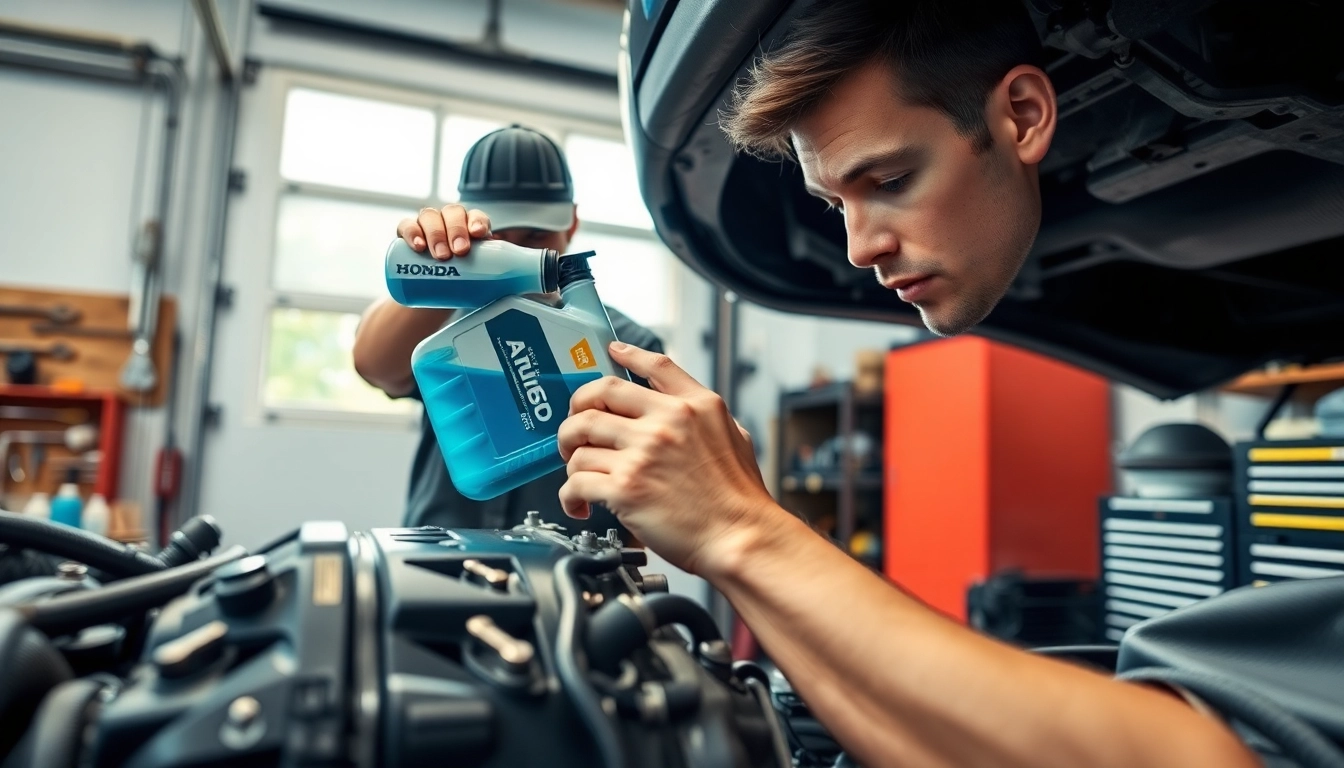Understanding E Fluids in Honda Vehicles
When it comes to maintaining your Honda’s performance and longevity, one crucial aspect that often goes overlooked is the use and quality of e fluids. E fluids, or electronic fluids, are specially formulated to enhance the functionality of various vehicle systems, including the transmission. In this guide, we will delve into what e fluids are, their significance for transmission health, and the specific types used in Honda vehicles. Understanding these elements can make a substantial difference in your vehicle’s performance and help you make informed maintenance decisions. For a deeper understanding of e fluids, you can explore more information here.
What Are E Fluids?
E fluids refer to the advanced lubricants and fluids that are designed specifically for modern vehicles, particularly those that utilize complex electronic systems. These fluids serve various functions, including lubrication, cooling, and protecting the internal components of the vehicle. Unlike traditional fluids, e fluids are engineered to meet the demands of high-performance engines and transmissions, making them integral to the smooth operation of Honda vehicles.
Importance of E Fluids for Transmission Health
The transmission is one of the most vital components of a vehicle, and its health directly impacts overall performance. E fluids play a crucial role in maintaining transmission health by ensuring smooth gear shifts, reducing friction, and providing essential cooling. By using the appropriate e fluids, Honda drivers can help extend the life of their transmission, improve fuel efficiency, and enhance driving comfort.
Common Types of E Fluids Used in Honda
Honda vehicles typically use a variety of e fluids tailored for their specific needs. Some common types include:
- Honda Automatic Transmission Fluid (ATF-Z1/Z2): This fluid is specially designed for Honda’s automatic transmissions, providing optimal performance and protection.
- Honda CVT Fluid: For Honda vehicles equipped with Continuously Variable Transmissions, this fluid ensures seamless operation and maximizes efficiency.
- Honda Power Steering Fluid: Formulated to meet the precise specifications of Honda vehicles, this fluid enhances steering responsiveness and helps prevent pump failure.
Signs That Your Honda Needs Fluid Change
Recognizing when your Honda requires a fluid change is vital for maintaining its performance. Various indicators may signal that it’s time to inspect or replace your e fluids.
Recognizing Transmission Fluid Issues
Some common signs of transmission fluid issues may include:
- Unusual Noises: Grinding, whining, or clunking sounds when the vehicle shifts gears can indicate low or dirty transmission fluid.
- Delayed Engagement: If your vehicle hesitates to engage when shifted into drive or reverse, it may be a sign of low fluid levels.
- Fluid Leaks: Puddles of red or brown fluid under your vehicle are a clear indication that your transmission fluid may be leaking.
How E Fluids Affect Vehicle Performance
The quality and type of e fluids used in your Honda can significantly impact performance. Superior e fluids lead to better lubrication, resulting in reduced friction and heat generation. This enhances overall efficiency, improves fuel economy, and extends the life of the transmission. On the other hand, using subpar fluids can lead to issues such as overheating and premature wear of transmission components.
When to Inspect Your Honda’s Fluid Levels
It is advisable to inspect your vehicle’s e fluids regularly. Here are some recommended times to conduct fluid level checks:
- Every oil change
- Before long trips
- When experiencing any of the symptoms mentioned previously
Step-by-Step Guide to Fluid Change
Changing your Honda’s fluids is essential for vehicle maintenance. Below is a comprehensive guide to help you through the process.
Required Tools and Equipment
Before starting, gather the following tools and equipment:
- Wrench set
- Fluid pump
- Drain pan
- New e fluids specific to Honda specifications
- Funnel
- Safety gloves and goggles
Safe and Effective Fluid Change Procedures
Follow these steps to safely and effectively change your Honda’s transmission fluid:
- Start by parking your vehicle on a level surface and turning off the engine.
- Remove the transmission fluid pan by loosening the bolts with your wrench set.
- Allow the old fluid to fully drain into the drain pan.
- Replace the filter if applicable, following the manufacturer’s guidelines.
- Reinstall the transmission pan and tighten the bolts securely.
- Using a funnel, add the new e fluid to the transmission through the dipstick tube or fill hole.
- Start the engine and let it run for a few minutes. Check the fluid levels and add more if necessary.
Disposing of Old E Fluids Properly
Environmental responsibility is essential, especially when disposing of used fluids. Always take your old e fluids to a recycling center or an auto shop that can handle hazardous waste. Never dispose of fluids in the regular trash or pour them down the drain.
Common Mistakes to Avoid During Fluid Change
While changing fluids is a straightforward process, there are common pitfalls that can lead to further issues.
Using Incorrect E Fluids
One of the most critical mistakes is using the wrong e fluids for your Honda. Always refer to your owner’s manual for the correct specifications and avoid generic fluids that may not meet Honda’s quality standards.
Neglecting Routine Maintenance
Skipping routine fluid changes can result in severe damage over time. Establish a regular maintenance schedule and stick to it to avoid costly repairs down the line.
Overfilling or Underfilling Transmission Fluids
Maintaining the right fluid level is crucial for transmission health. Overfilling can create pressure, leading to leaks, whereas underfilling can starve the transmission of necessary lubrication. Always check the fluid levels with the engine running and warm to ensure accuracy.
Enhancing Your Honda’s Longevity with E Fluids
Proper fluid maintenance is a cornerstone of vehicle longevity. Adhering to best practices can ensure your Honda operates at optimal conditions for years to come.
Best Practices for Fluid Maintenance
Implement these best practices to maintain e fluids and overall vehicle health:
- Follow the manufacturer’s recommendations for fluid change intervals.
- Regularly check fluid levels and quality.
- Only use fluids that meet OEM specifications.
Monitoring Fluid Quality Over Time
It’s important to monitor the color and consistency of your transmission fluid. Healthy transmission fluid is typically bright red and has a slightly sweet smell. If it appears dark brown or has a burnt odor, it’s time for a change.
Upgrade Options for Higher Efficiency
Consider high-performance e fluids if you want to take your Honda’s performance up a notch. These fluids often contain additives that can improve their effectiveness, leading to better performance and efficiency. Always verify that any upgrade is compatible with your vehicle’s specifications.



